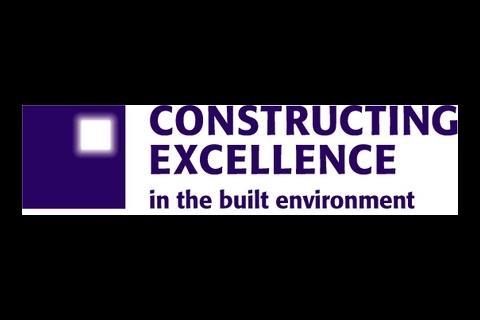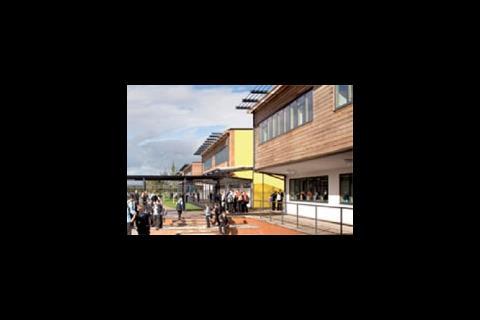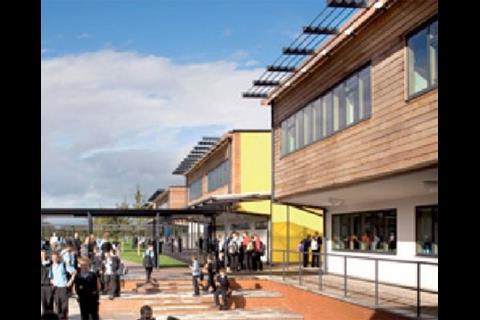Construction Excellence assesses the challenges the contractor faced to introduce sustainable features at the Herefordshire school
Whitecross High School in Herefordshire is an excellent example of how an integrated design and construction process, involving early consideration and engagement of the supply chain and end users, can provide a quality learning environment which reflects the challenges of sustainability delivered on time and budget with ongoing whole life cost savings.

Use of sustainable energy
Throughout design and construction the quality of the teaching environment and low energy consumption were given the highest priorities, resulting in a design utilising:• High thermal mass to restrict fluctuations in classroom temperatures and negating the need for air-conditioning
• Mechanical ventilation (with heat recovery) to all teaching spaces to ensure excellent fresh air quality and temperature and enabling night time cooling during summer
• Efficient lighting with daylight and motion sensors, maximising natural daylight using north/borrowed light and controlling solar gain through orientation and brise soleil
• Highly insulated buildings requiring minimal heating with an energy target in the best 10% of school buildings
• Low energy equipment and fittings
• A sustainable urban drainage system (SUDS) including sedum green roof, which encourages biodiversity, reducing run off and replacing part of the green field land utilised for the project
• A highly sophisticated BMS system, enabling individual automatic classroom control of lighting, heating and ventilation
• An energy meter installed in the entrance to demonstrate energy use of the school to pupils and to raise their awareness of sustainability
• Cedar cladding from sustainable sources and non-vinyl flooring.
As part of the up-front options appraisal exercise carried out in 2003, at initial design stage, each of the following were considered for inclusion in the school:
• Geothermal heating
• Solar thermal heating
• Photovoltaic cells
• Wind turbines
• Biomass boilers
In order to assess the viability of each of these solutions payback periods were calculated, comparing energy savings against the capital costs of installing such technologies, with benefit not being found in adopting any of these options.
Subsequent to these decisions being made, with rises in energy costs and reductions in the capital costs of some of the technologies, the project team appreciate that, were the same options appraisals to take place now, it is possible that different conclusions would be reached.
The fact that schools have relatively low utilisation rates, with teaching for eight hours maximum on only 190 days per year, further impacted on the calculations for the use of environmental technologies.
In addition, schools are generally closed during the summer – the period which provides the greatest benefit in terms of solar thermal heating.
However, Stepnell was anxious to demonstrate a commitment to sustainability and use the opportunity to learn from working with renewable energy and so opted to install a wind turbine despite the earlier options appraisal.
Different sizes and performance specifications of turbine were considered with the decision being made to install a 15kw model. The appraisal indicated that this would provide a 15 year payback if, as was anticipated, a 50% grant could be obtained.
Planning permission was received after a lengthy process of consultation with the planning authority and the sub-surface infrastructure for the turbine was fitted as part of the main build programme.
Unfortunately, the model chosen for installation was removed from sale for redesign by the manufacturer and the redesigned model is now awaiting certification and confirmation of funding. It is anticipated that, once operational, the turbine will provide around 6.5% of the school’s energy requirements.
Downloads
Whitecross High School case study
Other, Size 0 kb
Postscript
Contractor: Stepnell Ltd - Client: Herefordshire Council - Contract value: £15m































No comments yet